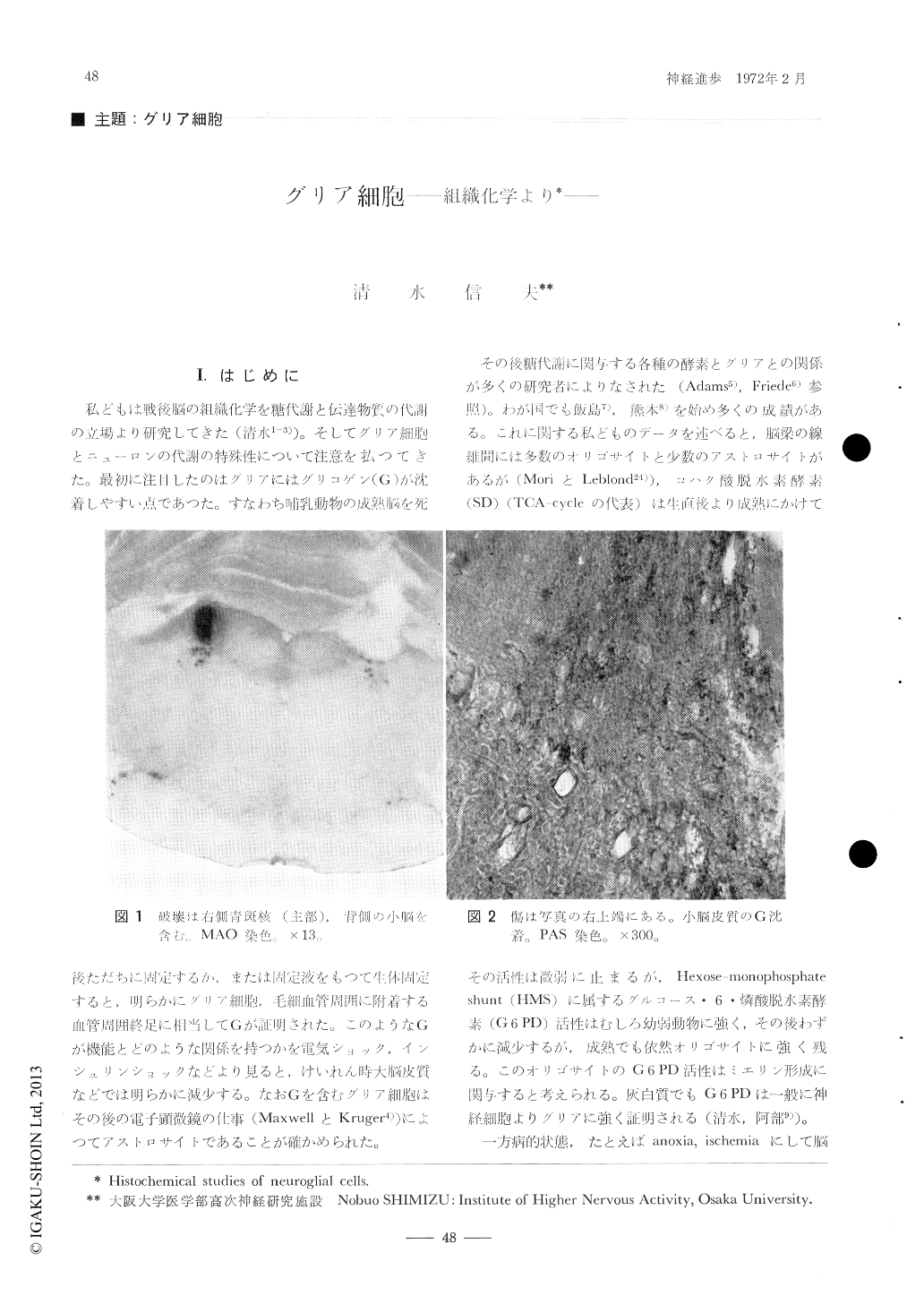Japanese
English
- 有料閲覧
- Abstract 文献概要
- 1ページ目 Look Inside
I.はじめに
私どもは戦後脳の組織化学を糖代謝と伝達物質の代謝の立場より研究してきた(清水1-3))。そしてグリア細胞とニューロンの代謝の特殊性について注意を払つてきた。最初に注目したのはグリアにはグリコゲン(G)が沈着しやすい点であつた。すなわち哺乳動物の成熟脳を死後ただちに固定するか,または固定液をもつて生体固定すると,明らかにグリア細胞,毛細血管周囲に附着する血管周囲終足に相当してGが証明された。このようなGが機能とどのような関係を持つかを電気ショック,インシュリンショックなどより見ると,けいれん時大脳皮質などでは明らかに減少する。なおGを含むグリア細胞はその後の電子顕微鏡の仕事(MaxwellとKruger4))にょつてアストロサイトであることが確かめられた。
その後糖代謝に関与する各種の酵素とグリアとの関係が多くの研究者によりなされた(Adams5),Friede6)参照)。わが国でも飯島7),熊本8)を始め多くの成績がある。
Histochemical studies were made on the glial reaction caused by the electrolytic lesions of the locus coeruleus of the rat with reference to glucose metabolism. The lesions usually involved neighboring structures such as the cerebellum and brachium conjunctivum, and observations in the cerebellar cortex, motor neucleus of the V nerve and cerebral cortex (pyriform lobe) were interesting.
1) Bergmann's cells in the cerebellar cortex adjacent to the lesion revealed their whole figures including long processes by their increased G6PD activity and cell bodies by enhanced LD reaction.

Copyright © 1972, Igaku-Shoin Ltd. All rights reserved.


